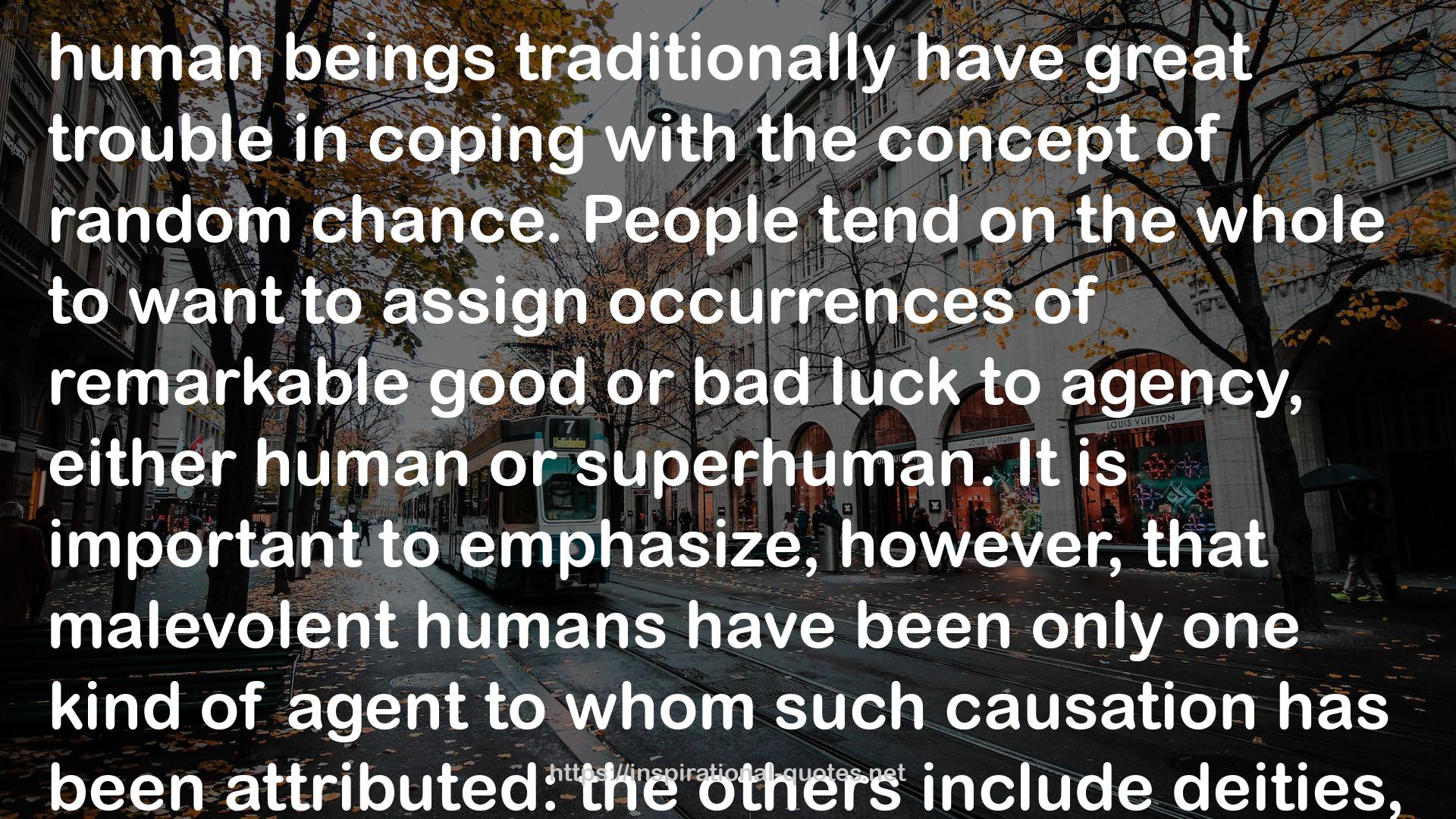15
" WHAT IS A witch? The standard scholarly definition of one was summed up in 1978 by a leading expert in the anthropology of religion, Rodney Needham, as ‘someone who causes harm to others by mystical means’. In stating this, he was self-consciously not providing a personal view of the matter, but summing up an established scholarly consensus, which dealt with the witch figure as one of those whom he termed ‘primordial characters’ of humanity. He added that no more rigorous definition was generally accepted.1 In all this he was certainly correct, for English-speaking scholars have used the word ‘witch’ when dealing with such a reputed person in all parts of the world, before Needham’s time, and ever since, as shall be seen. When the only historian of the European trials to set them systematically in a global context in recent years, Wolfgang Behringer, undertook his task, he termed witchcraft ‘a generic term for all kinds of evil magic and sorcery, as perceived by contemporaries’.2 Again, in doing so he was self-consciously perpetuating a scholarly norm. That usage has persisted till the present among anthropologists and historians of extra-European peoples: to take one recent example, in 2011 Katherine Luongo prefaced her study of the relationship between witchcraft and the law in early twentieth-century Kenya by defining witchcraft itself ‘in the Euro-American sense of the word’ as ‘magical harm’.3 "
― Ronald Hutton , The Witch: A History of Fear, from Ancient Times to the Present

